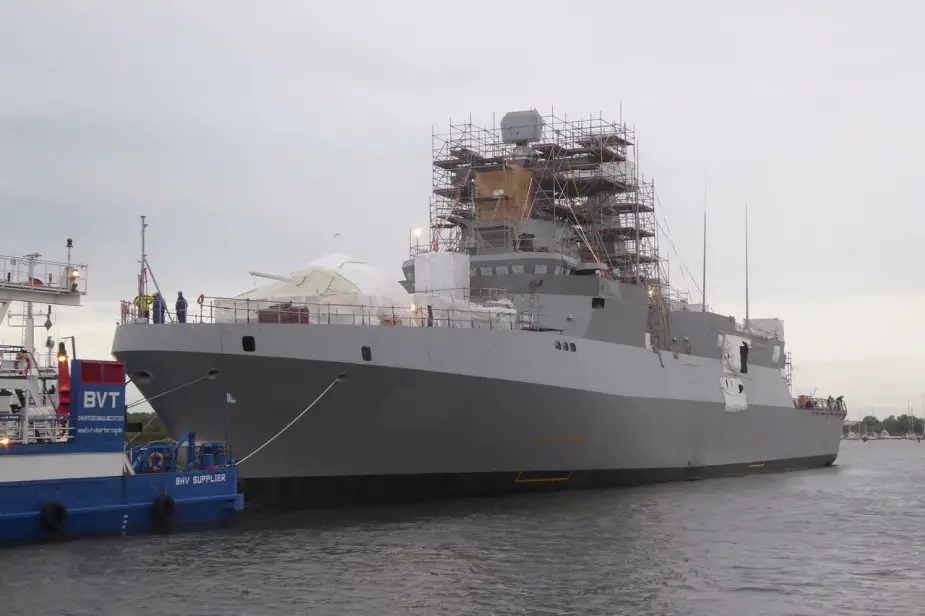Breaking news
Egyptian MEKO A200 frigate ENS Al Aziz is fitted with Thales NS100 3D naval radar.
According to a tweet published by Mahmoud Gamal on October 2, 2021, the Egyptian Navy ENS Al-Aziz MEKO A200 frigate made its first appearance after being fitted with Thales NS100 3D (AESA) naval radar system and a 127mm cannon.
Follow Navy Recognition on Google News at this link
 MEKO A-200 frigate ENS Al Aziz at Kiel, Germany (Picture source: Twitter account of Mahmoud Gamal)
MEKO A-200 frigate ENS Al Aziz at Kiel, Germany (Picture source: Twitter account of Mahmoud Gamal)
The MEKO A-200 Frigate follows the famous MEKO 200 series general purpose frigates from the ThyssenKrupp stable. A fighting ship capable of full 4-dimensional warfare (AAW, ASW and ASuW, BCW), the MEKO A-200 Frigate is also designed for sustained operations across the full spectrum of general missions and tasks: patrol and interdiction, support of special force operations, SAR and humanitarian operations.
The MEKO A-200 Frigate is a perfect example of the innovative propulsion, stealth and survivability design, robust sea-keeping and all-weather boat and helicopter operability that characterizes frigates from Marine Systems.
The MEKO A-200 has greatly reduced radar, IR, acoustic and magnetic signatures to hide and stay hidden: The X-Form shell design; extensive bulwark screening of exposed equipment; flush-closing shell doors, and RCSnet screening of all shell openings, give the vessel very low radar cross-section.
The NS100 surveillance task is enhanced with new multi-mission capabilities such as swarm defence, anti-piracy, UAV control and weapon support for active missiles. These different types of targets put different requirements on the radar; fighter jets require long-range, high diving missiles require elevation coverage, sea skimmers require fast reaction time, hovering helicopters require spectral information, UAVs are small and slow and require good clutter suppression, etc.
The NS100 detects this wide variety of targets in one single mode as one can never be certain of the type of threat encountered. This can be realized by introducing full digital beam-forming with Dual Axis Multi-beam processing and fully exploiting the AESA capability of forward and backward scanning.
The performance of the NS100 can be scaled by adding transmit elements to meet the diverse requirements and operational needs of navies around the world. The same basic radar can be optimized for different ship classes, leading to fleet-wise logistic advantages. Furthermore, the flexible radar architecture enables the through-life introduction of new capabilities thereby future-proofing the radar.




























